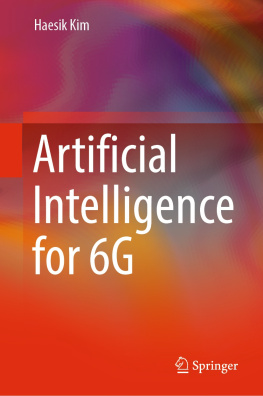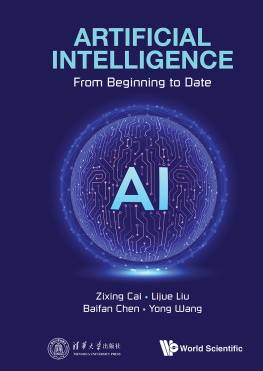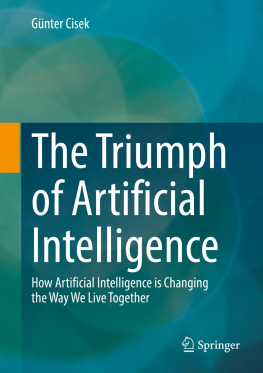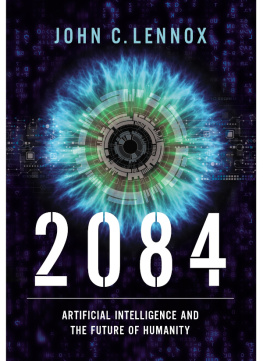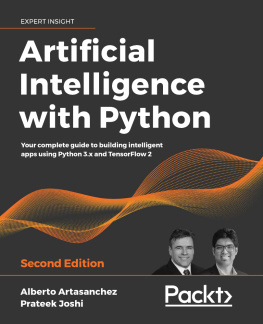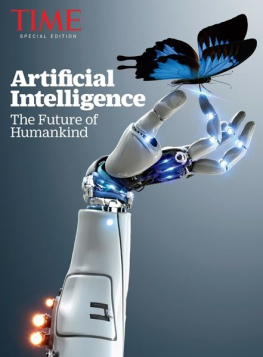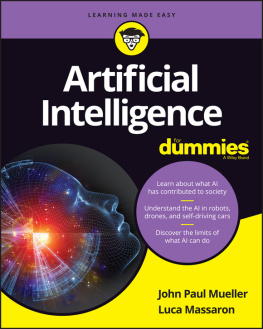John Zerilli - A Citizens Guide to Artificial Intelligence
Here you can read online John Zerilli - A Citizens Guide to Artificial Intelligence full text of the book (entire story) in english for free. Download pdf and epub, get meaning, cover and reviews about this ebook. publisher: MIT Press, genre: Romance novel. Description of the work, (preface) as well as reviews are available. Best literature library LitArk.com created for fans of good reading and offers a wide selection of genres:
Romance novel
Science fiction
Adventure
Detective
Science
History
Home and family
Prose
Art
Politics
Computer
Non-fiction
Religion
Business
Children
Humor
Choose a favorite category and find really read worthwhile books. Enjoy immersion in the world of imagination, feel the emotions of the characters or learn something new for yourself, make an fascinating discovery.

- Book:A Citizens Guide to Artificial Intelligence
- Author:
- Publisher:MIT Press
- Genre:
- Rating:5 / 5
- Favourites:Add to favourites
- Your mark:
- 100
- 1
- 2
- 3
- 4
- 5
A Citizens Guide to Artificial Intelligence: summary, description and annotation
We offer to read an annotation, description, summary or preface (depends on what the author of the book "A Citizens Guide to Artificial Intelligence" wrote himself). If you haven't found the necessary information about the book — write in the comments, we will try to find it.
John Zerilli: author's other books
Who wrote A Citizens Guide to Artificial Intelligence? Find out the surname, the name of the author of the book and a list of all author's works by series.
A Citizens Guide to Artificial Intelligence — read online for free the complete book (whole text) full work
Below is the text of the book, divided by pages. System saving the place of the last page read, allows you to conveniently read the book "A Citizens Guide to Artificial Intelligence" online for free, without having to search again every time where you left off. Put a bookmark, and you can go to the page where you finished reading at any time.
Font size:
Interval:
Bookmark:
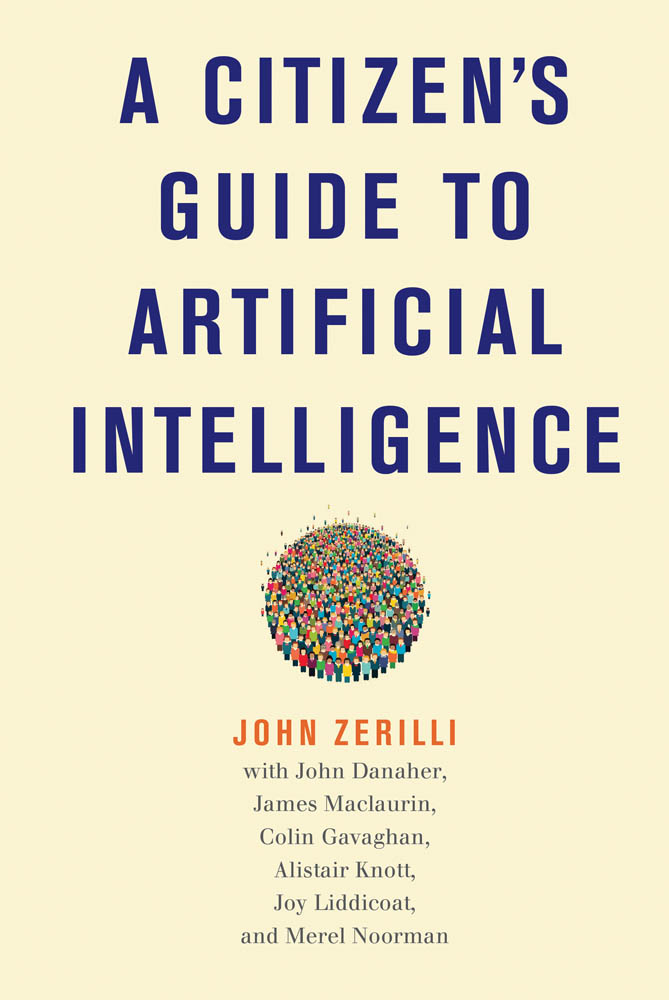
A Citizens Guide to Artificial Intelligence
John Zerilli
with John Danaher, James Maclaurin, Colin Gavaghan, Alistair Knott, Joy Liddicoat, and Merel Noorman
The MIT Press
Cambridge, Massachusetts
London, England
2021 Massachusetts Institute of Technology
All rights reserved. No part of this book may be reproduced in any form by any electronic or mechanical means (including photocopying, recording, or information storage and retrieval) without permission in writing from the publisher.

Library of Congress Cataloging-in-Publication Data
Names: Zerilli, John, author. | Danaher, John, author. | Maclaurin, James, author. | Gavaghan, Colin, author. | Knott, Alistair, 1967 author. | Liddicoat, Joy, author. | Noorman, Merel E., author.
Title: A citizens guide to artificial intelligence / John Zerilli, with John Danaher, James Maclaurin, Colin Gavaghan, Alistair Knott, Joy Liddicoat, and Merel Noorman.
Description: Cambridge, Massachusetts : The MIT Press, [2020] | Includes bibliographical references and index.
Identifiers: LCCN 2020005708 | ISBN 9780262044813 (hardcover)
Subjects: LCSH: Artificial intelligence--Social aspects--Popular works.
Classification: LCC Q334.7 .Z47 2020 | DDC 006.3--dc23
LC record available at https://lccn.loc.gov/2020005708
d_r0
Examples of the Gompertz curve, a mathematical function mapping age onto probability of dying.
A function defining a relation between peoples height and weight, learned by linear regression from the data points shown in black.
A simple decision tree for predicting a prisoners reoffending.
A simple feedforward network.
The various senses of transparency.
Presence (i) and danger of complacency (ii) as a function of system reliability. The dashed line represents near perfect (better-than-human) reliability.
Confusion Matrix for a Fraud Detection Algorithm
Administrative Law and the Difference between Appeal and Review
Breaking Down the Control Problem
The past decade has witnessed an unprecedented acceleration in both the sophistication and uptake of various algorithmic decision tools. From music and TV show recommendations, product advertising, and opinion polling to medical diagnostics, university admissions, job placement, and financial services, the range of the potential application of these technologies is truly vast. And while the business sector has wasted no time getting on board, governments too have been steadily integrating algorithmic decision support systems into their daily operations. Many police and law enforcement agencies around the world, for example, have co-opted deep learning tools in an effort to optimize efficiency and (so they say) reduce human bias. But while the roll-out continues to gather momentum and enthusiasts have welcomed the dawn of a new era, not everyone is convinced. Must those awaiting the outcome of a health insurance claim or defendants seeking bail or parole simply take it on faith that a machine knows best? Can a machine deciding such matters as the likelihood of a criminal reoffending really be accurate, free from bias, and transparent in its operations?
This book is the result of a joint effort in trying to make sense of the new algorithmic world order. Its structured around ten core themes. These canvass such questions as, what is artificial intelligence? Can an AI explain its decisions? Can it be held legally responsible? Does it have agency? What kind of control should humans retain over such systems, and does it depend on the kind of decision being made? Is the law of privacy in need of a fundamental rethink now that data sharing is easier and far more common than even ten years ago? How do we address the potential for manipulation through targeted political advertising? Is the use of decision tools by governments interestingly different from their use in industry? Do states have unique obligations to their citizens in this regard? How best to regulate behemoths like Facebook, Google, and Apple? Is regulation the answer? What kind of regulation?
The authorship of the book is a little unusual and perhaps merits a word or two of explanation. Put simply, although we wanted to have the best people write on the topics of their expertise, we didnt want the book to be a clunky miscellany of chapters and jarring styles, as is all too often the case with edited collections. Producing an authoritative work for the general public was certainly important to us, but we were adamant that it should have a single arc and speak with one voice. So, we needed someone to write a good chunk of the bookto set the tone, if you willand someone whod then be happy to take on what the others had written and mold it to that style. Ideally these roles would fall to the same person, and John Zerilli agreed to be that person, contributing just under half of the material and reshaping the rest to jibe with what hed written.
The result, we trust, will prove useful to the bemused citizen.
John Zerilli, James Maclaurin, Colin Gavaghan, Alistair Knott, and Joy Liddicoat wish to acknowledge the generous assistance provided by the New Zealand Law Foundation to the AI and Law in New Zealand project.
John Zerilli also wishes to thank the Leverhulme Centre for the Future of Intelligence in the University of Cambridge for hosting him during parts of the books composition. John is also grateful for the generous support of DeepMind Ethics and Society.
Parts of chapter 2 and the preface are reprinted with permission from Springer Nature, Philosophy and Technology, Transparency in Algorithmic and Human Decision-Making: Is There a Double Standard? by John Zerilli, Alistair Knott, James Maclaurin, and Colin Gavaghan, copyright 2018. Parts of Chapter 5 are reprinted from Springer Nature, Minds and Machines, Algorithmic Decision-Making and the Control Problem by the same authors, copyright 2019.
Theres always something about astonishing technical feats that gives us pause. In a way theyre both humbling and ennobling. They remind us how powerless we are without them and yet how powerful we must have been to produce them.
Sometimes what initially look like promising gadgets fizzle out and are soon forgotten (who uses a Blackberry anymore?). At other times the opposite seems to happen: an ingenious invention seems lackluster but later proves its mettle. In the twentieth century, neither the futurist H. G. Wells nor the British Royal Navy thought that submarines would amount to much. Today, stealth submarines are an indispensable part of naval operations. Barely a century earlier, Charles Babbages designs for an Analytical Engine were dismissed as crackpot fantasies, even though history would eventually, and spectacularly, vindicate his ambition and foresight. The Analytical Engine was essentially the worlds first programmable general-purpose computer. Remarkably, Babbages designs also anticipated the von Neumann architecture of every standard desktop in use today, complete with separate memory, central processor, looping, and conditional branching.
Font size:
Interval:
Bookmark:
Similar books «A Citizens Guide to Artificial Intelligence»
Look at similar books to A Citizens Guide to Artificial Intelligence. We have selected literature similar in name and meaning in the hope of providing readers with more options to find new, interesting, not yet read works.
Discussion, reviews of the book A Citizens Guide to Artificial Intelligence and just readers' own opinions. Leave your comments, write what you think about the work, its meaning or the main characters. Specify what exactly you liked and what you didn't like, and why you think so.



